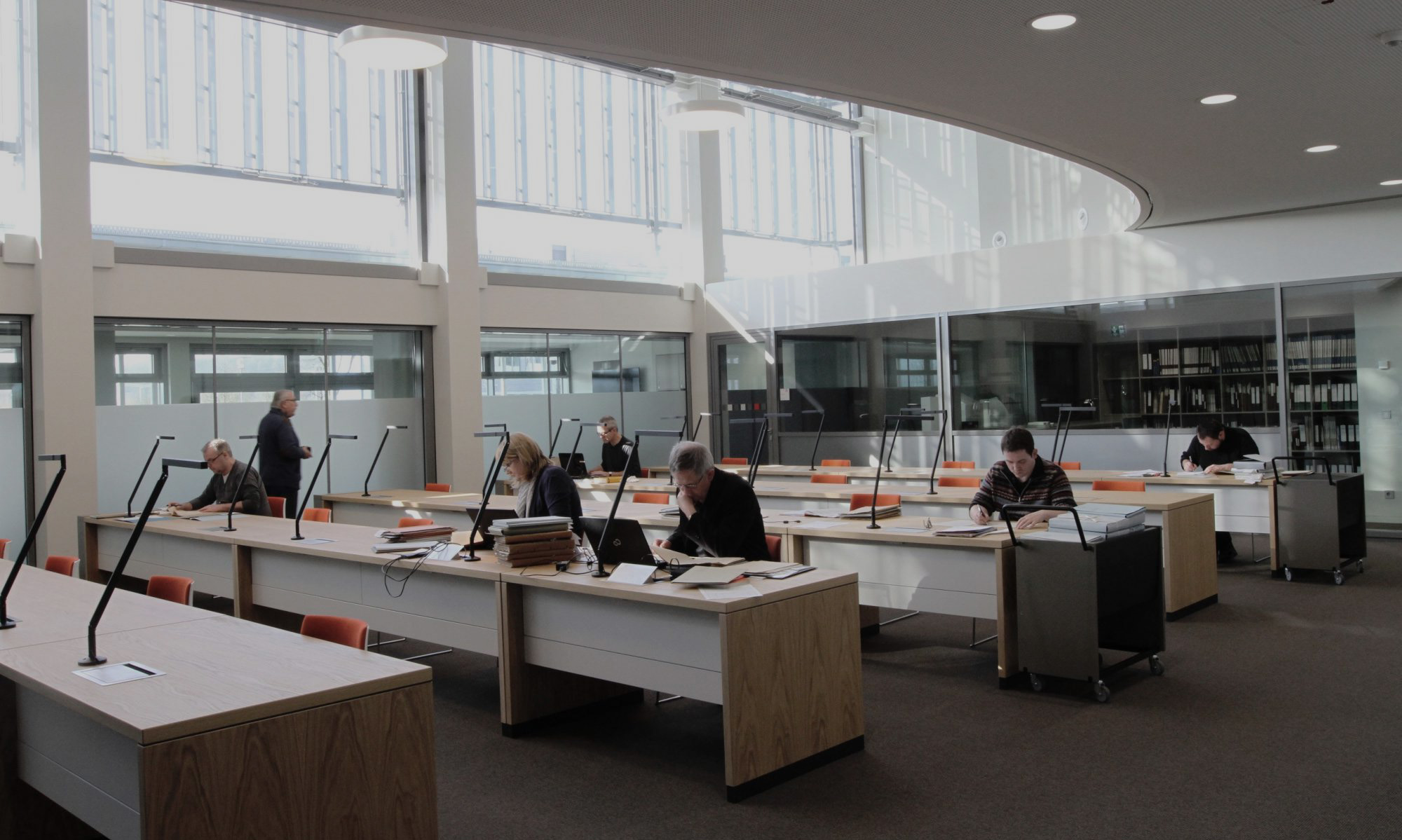In order to make the files available for current research methods and accessible to the public, they must be digitised in the most conservation-friendly way possible. To ensure that all of the more than two million pages can be digitised within the specified duration, the project is working together with a specialised service provider. Intensive preparation and cooperation with the archivists in charge of the inventory and with the restoration department, as well as targeted project planning, ensures a smooth process of digitisation. The quality of the scan images is guaranteed by, inter alia, compliance with ISO 19264-1, a standard that also applies to internal digitisation work at the Landeshauptarchiv.
Conservation-Friendly Digitisation using Archive Scanners

Only overhead scanners are used for the digitisation of the archival materials. They consist of an evenly illuminated support table for the archival files which is equipped with a tiltable glass plate that can be used to additionally secure documents. The camera module which includes a special sensor and a high-quality lens is mounted on a tripod above the table and allows distortion-free images to be taken.
Experienced scan operators trained in the careful handling of archival materials produce images of each individual file page and then export them as master files in the lossless TIFF format and as working copies in the compressed JPEG format. If required, further formats or resolutions can be exported from these formats, e.g. for web presentation or print reproductions.
Quality Check and Utilisation
As soon as the digital files have been transferred to the project, they are checked for completeness, integrity and compliance with the agreed digitisation requirements as part of the quality assurance process. After successful examination, they are uploaded into the internal working environment and converted as best as possible into computer-readable information, i.e. made searchable, by means of OCR (Optical Character Recognition). Difficulties for OCR are posed by the different fonts (Antiqua and Gothic fonts) as well as the diverse print images resulting from the various reproduction methods, paper types and ageing conditions. The quality checked and processed digital files are evaluated by the provenance research department using a DMS to be developed for this purpose in the Landeshauptarchiv. Furthermore they are made publicly available as comprehensively as possible via the archival database of the Landeshauptarchiv.

